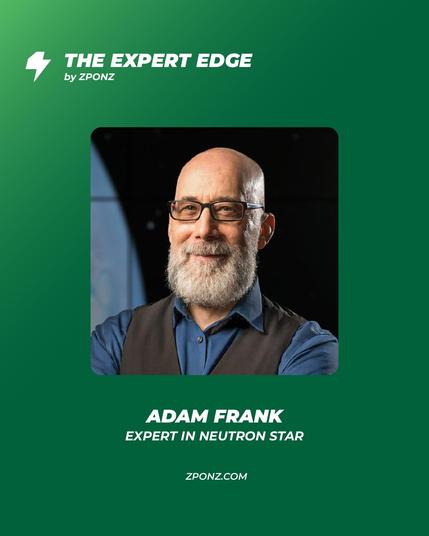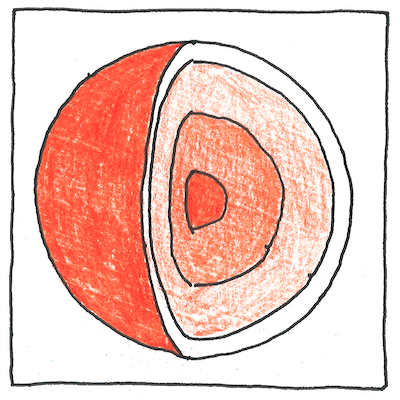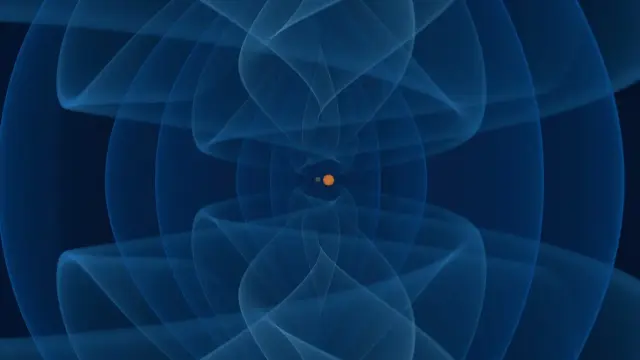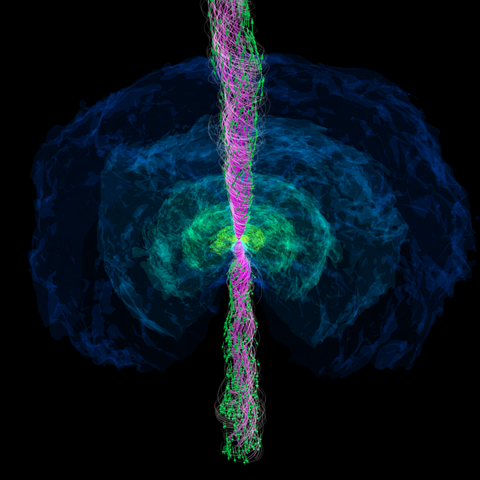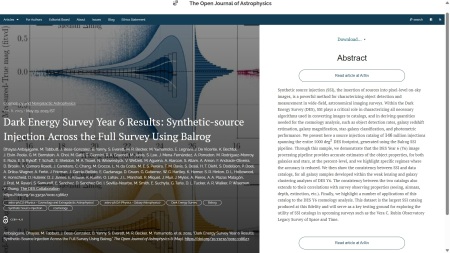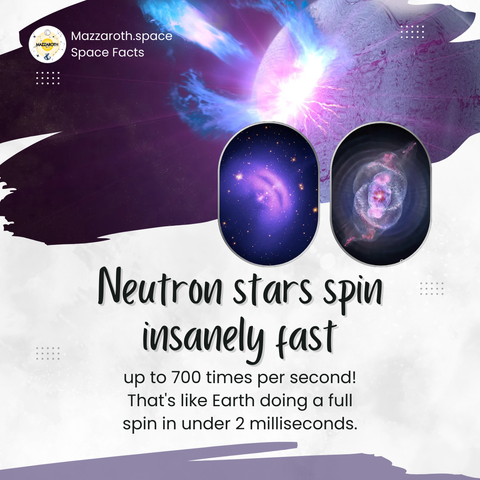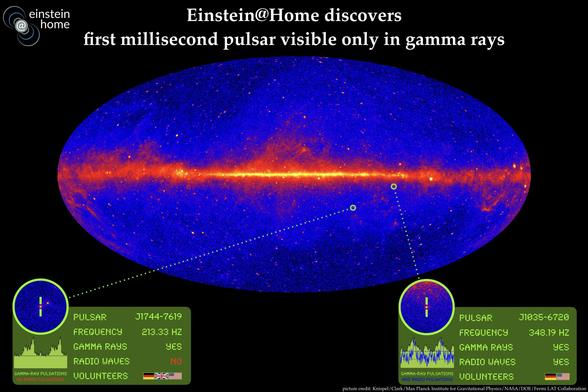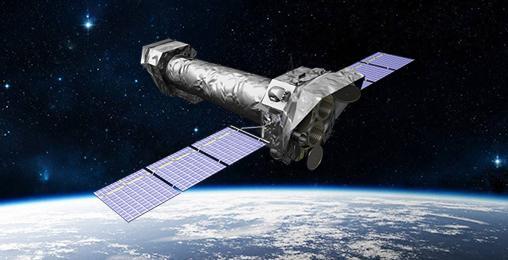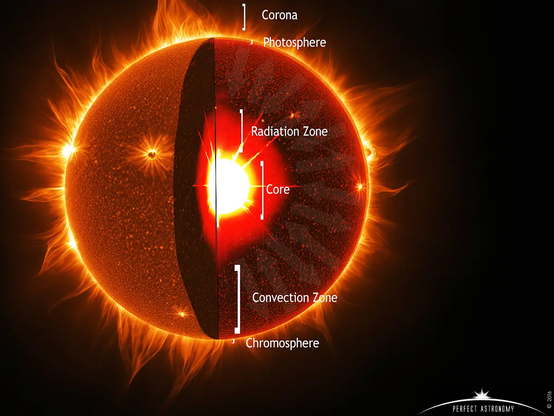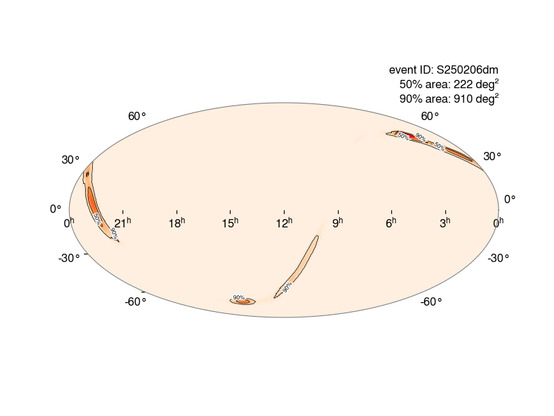THE EXPERT EDGE BY ZPONZ: Expert in Neutron star
Professor Frank's research is in the general area of theoretical astrophysics, and in particular the hydrodynamic and magneto-hydrodynamic evolution of matter ejected from stars. His scientific studies are funded by the National Science Foundation, NASA and the Department of Education
#ZPONZ #GetPaidForExpertise #MonetizeYourSkills #Neutronstar
#neutronstar
Atoms As Big As Mountains — Neutron Stars Explained
In 1933, Walter Baade and Fritz Zwicky described a neutron star and how it forms. #Poetry #Science #History #Astrophysics #NeutronStar #Baade #Zwicky (https://sharpgiving.com/thebookofscience/items/p1933c.html)
Black Hole Consumes Magnetized Neutron Star
"The spiraling shape will make you go insane
Everyone wants to see that groovy thing..." (#TMBG)
https://youtube.com/watch?v=684Ie6uONus&si=ky25JLGXnS-0cU5S
#science #BlackHole #NeutronStar #astronomy #research #collision
🎉 Happy belated birthday, GW230529!
Two years and a few days ago, the @LIGO Livingston gravitational-wave detector observed a remarkable gravitational-wave signal.
ℹ️ https://www.aei.mpg.de/1138125/mysterious-object-in-the-gap
Detected soon after the beginning of the fourth joint observing run of the LIGO-Virgo-KAGRA collaborations, the signal came from the merger of a compact object with 1.3 to 2.1 times the mass of our Sun with another compact object with 2.6 to 4.7 times the solar mass.
Astronomers believe that the lighter object is a neutron star and the heavier is a lightweight black hole.
How that lightweight black hole formed is unknown. Its masse falls into the “lower mass gap” between the heaviest neutron stars and the lightest black holes.
📄 https://iopscience.iop.org/article/10.3847/2041-8213/ad5beb
Image: I. Markin (@unipotsdam), T. Dietrich (@unipotsdam and @mpi_grav) H. Pfeiffer, A. Buonanno (@mpi_grav)
#GW230529 #GravitationalWaves #MassGap #BlackHole #NeutronStar #Astronomy
💡 Breakthrough in simulating how neutron stars collide 💥
Longest self-consistent numerical-relativity simulation to date reveals details of black hole and jet formation and advances multi-messenger astronomy.
ℹ️ https://www.aei.mpg.de/1249127/breakthrough-in-simulating-how-neutron-stars-collide
📄 https://journals.aps.org/prl/abstract/10.1103/PhysRevLett.134.211407
Picture: K. Hayashi / @mpi_grav
#NeutronStar #Astrophysics #BlackHole #MultiMessengerAstronomy #Kilonova #Jet #Astronomy #GravitationalWaves
Weekly Update from the Open Journal of Astrophysics – 31/05/2025
Once again it’s time for the weekly Saturday morning update of papers published at the Open Journal of Astrophysics. Since the last update we have published five new papers, which brings the number in Volume 8 (2025) up to 67; the total so far published by OJAp has passed the 300 mark and is now up to 302. If we keep up at the same rate for the rest of the year as we did for the first five months now completed, we will publish around 160 papers altogether in 2025.
In chronological order of publication, the five papers published this week, with their overlays, are as follows. You can click on the images of the overlays to make them larger should you wish to do so.
The first paper to report is “Which is the most eccentric binary known? Insights from the 2023/4 pericenter passages of Zeta Boötis and Eta Ophiuchi” by Idel Waisberg, Ygal Klein and Boaz Katz (Weizmann Institute of Science, Israel). This is a report of interferometric observations of two very eccentric binary star systems, published on Tuesday 27th May 2025 in the folder Solar and Stellar Astrophysics. The overlay is here:
You can read the final accepted version on arXiv here.
The second paper to report is “On the full non-Gaussian Surprise statistic and the cosmological concordance between DESI, SDSS and Pantheon+” by Pedro Riba Mello & Miguel Quartin (Universidade Federal do Rio de Janeiro, Brazil), and Bjoern Malte Schaefer & Benedikt Schosser (Heidelberg, Germany). This paper is in the folder Cosmology and NonGalactic Astrophysics and was published on Tuesday 27th May 2025. The paper presents an application of the “Surprise Statistic”, based on the Kullback-Leibler divergence, as a measure of the difference between results inferred from different data sets.
The overlay is here:
You can find the officially-accepted version of the paper on arXiv here.
The third paper we published last week, and our 300th overall, is “Cosmic Ray Feedback in Massive Halos: Implications for the Distribution of Baryons” by Eliot Quataert (Princeton, USA) and Philip F. Hopkins (Caltech, USA). This was published on Thursday 29th May in the folder Cosmology and NonGalactic Astrophysics. The paper discusses the effects of cosmic rays produced by massive black holes on the structure of the baryonic component of galaxies and how these might affect cosmological parameter estimation. The overlay is here:
You can read the officially accepted version of this paper on arXiv here.
The next one to report is “Mixing neutron star material into the jets in the common envelope jets supernova r-process scenario” by Noam Soker (Technion, Israel). This was published on Thursday 27th May in the folder High-Energy Astrophysical Phenomena; it presents a discussion of the chemical enrichment of an evolved star consequent upon its ingestion of a neutron star.
The overlay is here:
You can find the officially accepted version on arXiv here.
Last, but by no means least, for this week we have “Dark Energy Survey Year 6 Results: Synthetic-source Injection Across the Full Survey Using Balrog” by Dhayaa Anbajagane (Kavli Institute, Chicago) et al. (81 authors) on behalf of the Dark Energy Survey Collaboration. It was also published on Thursday 27th May 2025, but in the folder Cosmology and NonGalactic Astrophysics. It is about testing the Dark Energy Survey analysis pipeline using synthetic sources.
The overlay is here:
You can find the officially accepted version on arXiv here.
That’s all the papers for this week. I’ll post another update next weekend.
#arXiv240808385v2 #arXiv250105683v3 #arXiv250201753v2 #arXiv250202411v2 #arXiv250417858v2 #binaryStars #CosmologyAndNonGalacticAstrophysics #DarkEnergySurvey #DiamondOpenAccess #DiamondOpenAccessPublishing #HighEnergyAstrophysicalPhenomena #neutronStar #OpenJournalOfAstrophysics #rProcess #SolarAndStellarAstrophysics #TheOpenJournalOfAstrophysics
Today’s bite-sized space fact:
Neutron stars — the ultra-dense remnants of massive stars — can spin up to 700 times per second. That’s faster than a kitchen blender! 🤯
Mind = Blown.
#Astronomy #NeutronStar #SpaceFact #Science #Astrophysics #SpaceNews #Stargazing
🚨 New header picture 🖼️
It shows the two supernova remnants Cassiopeia A (left, in X-rays) and Vela Jr. (right, at radio wavelengths). Both harbor a “central compact object”, a neutron star left behind together with the debris cloud after the supernova.
Researchers from the permanent independent @maxplanckgesellschaft research group “Continuous Gravitational Waves” at @mpi_grav in Hanover, Germany, have been searching for gravitational waves from these central compact objects using the volunteer distributed computing project @einsteinathome.
📄 https://arxiv.org/abs/2503.09731
The fact that they did not find any gravitational waves indicates that the neutron stars can only be minimally deformed.
ℹ️ https://www.aei.mpg.de/1188233/digging-deeper-with-einstein-home?c=26149
Images: http://snrcat.physics.umanitoba.ca/SNRrecord.php?id=G111.7m02.1 and http://snrcat.physics.umanitoba.ca/SNRrecord.php?id=G266.2m01.2
#HeaderPicture #supernova #CasA #VelaJr #astrodon #astronomy #NeutronStar
✨ Neutron stars: cosmic powerhouses!
🌌 Denser than imaginable, their gravity and magnetism redefine extremes. From billion-tonne teaspoons to pulsars, dive into their wonders. 🚀✨
👉👁️Watch the full video here: ✅🛡️▶️ https://TPC8.short.gy/RMGSrs04
#astronomy #neutronstar #pulsar #supernova #gravity #stars #astrophysics #physics #sun #cosmos #space #universe #science #neutron
On this day 16 years ago, our distributed computing project @einsteinathome began searching for radio pulsars for the first time.
Previously, volunteers were able to donate computing time on their computers to search for gravitational waves from rotating neutron stars (still mysterious remnants of exploded stars).
Starting 24 March 2009, new applications were available that allowed Einstein@Home volunteers to search Arecibo radio telescope data for radio pulsars (special neutron stars) in close binary systems.
#EinsteinAtHome #CitizenScience #pulsars #RadioPulsars #NeutronStar #astronomy #astrophysics #OnThisDay #OTD
On this day seven years ago, an international research team (led by @mpi_grav and @MPIfR_Bonn) published the first millisecond pulsar flashing only in gamma rays.
The discovery was possible thanks to the volunteer distributed computing project @einsteinathome, which the researchers used to find many more gamma-ray pulsars.
Millisecond pulsars are neutron stars – remnants of stellar explosions about 20 km in size with strong magnetic fields – that spin many hundreds of times per second around their axis.
Prior to this discovery, all millisecond pulsars observed in gamma rays also emitted radio waves. The newly discovered “PSR J1744-7619” (rotating 213 times per second) is the first known exception.
https://www.science.org/doi/10.1126/sciadv.aao7228 [Open Access]
#Astronomy #Astrophysics #Pulsar #NeutronStar #GammaRays #OTD
X-rays from Dark Matter?
https://scitechdaily.com/physicists-may-have-found-dark-matter-x-rays-surrounding-magnificent-7-may-be-traces-of-theorized-particle/
#XMMNewton
#ChandraX
#XRay #XRays
#astronomy #DarkMatter
#axion #axions #WIMP
#particle #physics
#astrophysics #cosmology
#NeutronStar #NeutronStars
Phys.org: Did astronomers just witness the formation of a 'strange star?'
#PhysOrg #Quarks #NeutronStar #StrangeStar
https://phys.org/news/2025-02-astronomers-witness-formation-strange-star.html
The #ChandrasekharLimit is the maximum mass of a white dwarf star, approximately 1.4 times the mass of the Sun.
Beyond this limit, the star's core can no longer support itself against gravitational collapse, leading to the formation of a #NeutronStar or #BlackHole.
Exciting new gravitational-wave candidate!
Last night, the two @LIGO detectors observed the signal candidate S250206dm. It comes either from the merger of a neutron star with a black hole or from the merger of two neutron stars – either way, it's exciting!
The (luminosity) distance is about 1.1 billion light-years and the position in the sky could be constrained to an area of about 910 square degrees.
The search for possible associated signals in the electromagnetic spectrum has begun. You can follow this in the associated GCN Circulars (see below).
ℹ️ https://gracedb.ligo.org/superevents/S250206dm/view/ [GraceDB]
ℹ️ https://gcn.nasa.gov/circulars?query=S250206dm [associated GCN Circulars]
#GravitationalWaves #astronomy #NeutronStar #astrophysics #physics #S250206dm
Constraining the equation of state in #NeutronStar cores via the long-ringdown signal: https://www.nature.com/articles/s41467-025-56500-x -> Tuning forks in space - a final pure “tone” may reveal interior of neutron stars: https://aktuelles.uni-frankfurt.de/english/tuning-forks-in-space-a-final-pure-tone-may-reveal-interior-of-neutron-stars/
#FastRadioBursts originate near the surface of stars
Rare burst indicates #FRB likely originate near the star and that they share a feature with emissions of #pulsars, another subtype of #neutronstar.
Data regarding #FRB20221022A seem pretty clear, Key question is whether this particular FRB tells us much about all other FRBs observed, including those from repeating sources. It remains entirely possible more than one type of event produces something that looks like an FRB
https://arstechnica.com/science/2025/01/new-findings-get-us-closer-to-knowing-what-causes-radio-bursts/
Here's my latest space simulation video! I haven't really done much with orbital decay before so this was interesting! Once again, I've added a soundtrack to my video, no VFX this time though. That's because it already looked very cool! Because of how the video was rendered, the accretion disk has this interesting sparkling effect.
#Space #Simulation #Astronomy #Astrophysics #BlackHole #NeutronStar #AccretionDisk #SpaceSim #OpenSPH #Soundtrack #Music #YouTube
